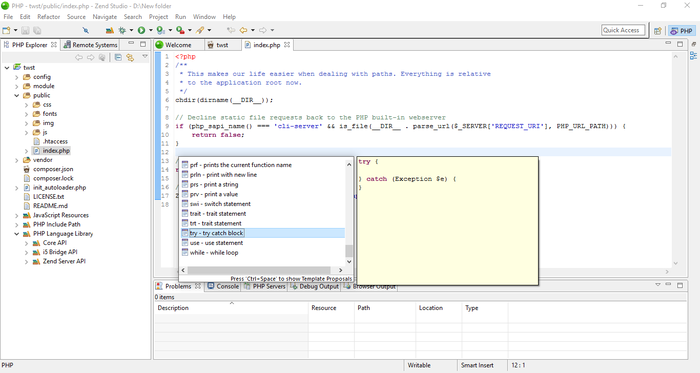
The integration of JavaScript is the big new feature with the first beta of Zend Studio 8. The new Request Monitor allows developers to analyze the execution of their Web pages from the point of view of JavaScript, CSS, and DOM source and events.

Zend also gives developers new tools for finding out what’s slowing down their applications. Streamlining the JavaScript development and debugging process should make it easier for developers to ensure that they have locked down the most obvious ingress points, thereby providing an additional element of security for their business applications.
If there’s one knock on AJAX and JavaScript, it’s that all the Web 2.0 eye candy provides a plethora of avenues for hackers to get in and do their (dirty) business. The capability to write more secure AJAX applications should be very important for PHP developers–particularly the business-minded developers targeting the IBM i platform. Zend says it will also allow developers to write cleaner, more secure code. This eliminates the need to bring in a separate set of tools to debug JavaScript, and should speed up the development process. The new release also allows JavaScript and AJAX screens to be debugged using the same set of tools used to debug PHP.
Zend studio 4.0 code#
(Content assist was previously available for Dojo, but now other libraries are supported, too.) Developers can also drag and drop chunks of JavaScript code in their IDE, just as they do for PHP. This gives developers so-called “content assist” capabilities, such as code completion and completing JavaScript proposals and arguments. It now includes built-in support for the most popular open source JavaScript libraries, including jQuery, Dojo, ExtJs, and Prototype. Zend Studio 8 brings JavaScript directly into the integrated development environment (IDE). For many PHP developers who already use JavaScript, the enhancements in Studio 8 just made their lives easier. With Zend Studio 8, using JavaScript as the front-end for PHP apps developed with Zend tools becomes almost a no-brainer. Usually, this database is MySQL, but thanks to the close working relationship between Zend Technologies and IBM, PHP developers targeting the IBM i server have the option of running their PHP apps directly against DB2/400.Ī PHP developer has several options for writing the front-end user interface of a Web application, including static HTML, creating HTML dynamically on the fly, or using a scripting language like JavaScript. But today, PHP almost always runs on the Web server, where it interacts closely with the underlying database powering the Web application. Yes, PHP was originally created as a general purpose scripting language that could run, like JavaScript, directly in the Web browser.

PHP, on the other hand, is a server-side scripting language. Whatever you call them, the key ingredient in these highly interactive Web applications is almost always JavaScript. Some call these “rich Internet applications,” or RIAs, while others refer to them as Web 2.0 apps.
Zend studio 4.0 Pc#
Once maligned for its role in Internet security breaches–particularly for cross-site scripting flaws, which is still a big concern–JavaScript is surging in popularity these days as the key component in AJAX (Asynchronous JavaScript and XML).ĪJAX, of course, refers to a common group of technologies used to write interactive Web applications that function like ordinary PC applications. And with last month’s release of the first beta for Zend Studio 8, Zend Technologies is making the case that JavaScript, the foremost client-side scripting language, and PHP, the popular server-side scripting language, should be developed together, in the same IDE, where they can harmoniously interact, to the betterment of society–not to mention the Web development project at hand.

PHP and JavaScript Come Together in Zend Studio 8


 0 kommentar(er)
0 kommentar(er)
